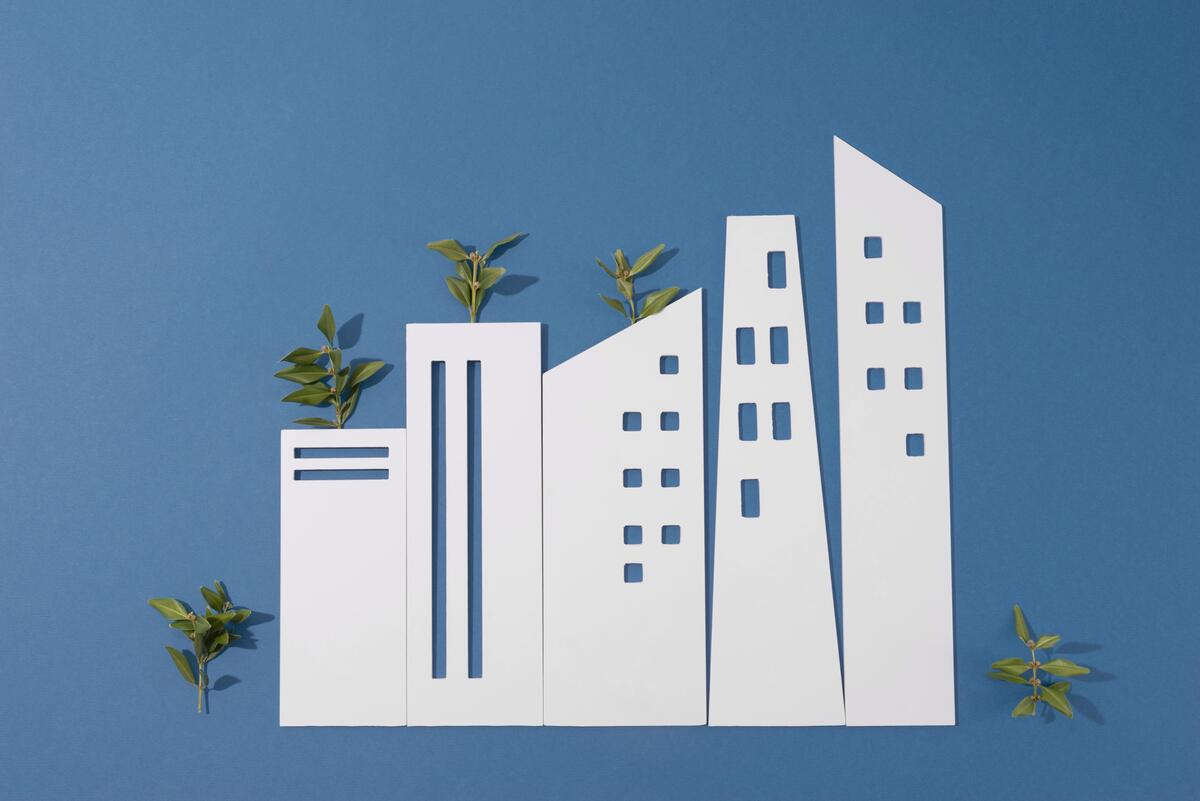One significant turning point in developing the construction industry has been COP29 in low-carbon construction practices. This year’s conference strongly emphasized lowering emissions from the built environment because the construction industry is accountable for around 40% of global carbon emissions. By focusing on sustainable materials, energy efficiency, and green building certifications, the talks at COP29 sought to bring global construction practices into line with net-zero aspirations. Key industry participants, legislators, and sustainability specialists attended to discuss solutions to decarbonize the whole construction process, from the extraction of building materials to the dismantling process.
The demand for more funding for cutting-edge, low-carbon technologies as well as more robust incentives for green building initiatives was a standout point. This essay explores how COP29 has affected the construction sector and highlights practical ways to hasten the transition to low-carbon building. We’ll discuss the difficulties, possibilities, and chances for the future, emphasizing how crucial COP29 in low-carbon construction practices is to creating a more sustainable built environment.
Table of Contents
The Importance of COP29 in Low-Carbon Construction
As the demand to reduce emissions increases and global temperatures rise, low-carbon construction is becoming more and more important. Building materials, waste production, and energy consumption all contribute to the construction industry’s carbon emissions. COP29 underlined how crucial it is to incorporate sustainability into the building process in order to lessen these effects. This comprises:
- Energy-Efficient Designs: To reduce operating energy consumption, passive and energy-efficient building designs are encouraged.
- Lifecycle Carbon Reduction: Taking into account a building’s carbon footprint from the time of construction to the point of demolition.
- Sustainable Materials: Promoting the use of cutting-edge materials like bio-based composites and low-carbon substitutes like recycled steel and wood.
These strategies were highlighted during COP29 as being crucial to reaching global climate goals.

The Emphasis on Sustainable Materials at COP29
The enhanced focus on sustainable building materials was one of COP29’s major outcomes. Given that building material extraction and processing significantly increase carbon emissions, COP29 emphasized:
- Green Material Incentives: Ideas to encourage the use of environmentally friendly materials including bamboo, repurposed wood, and low-carbon cement.
- Case Studies from Leading Countries: Examples of how using sustainable materials can result in significant carbon reductions were provided from countries that are at the forefront of green construction techniques.
- Material Standards: To guarantee uniformity and dependability in low-carbon building, discussions focused on creating global standards for sustainable materials.
To reduce embodied carbon in building projects, COP29 prioritizes sustainable materials.
Suggested article to read: Top 7 Reusable Materials in Construction; 2024 Review
Encouraging Net-Zero Energy Buildings
At COP29, the promotion of net-zero energy buildings (NZEBs) was one of the main topics. These structures are made to generate as much energy as they use, frequently from renewable resources like wind and solar. Among the main conclusions drawn from COP29 were:
- Financial Incentives: Suggestions for expanding tax credits and other financial incentives to encourage developers to construct NZEBs.
- Integration of Smart Technologies: In line with net-zero objectives, smart building technologies are being promoted to track and optimize energy use.
- Energy Standards and Codes: Advocates for more stringent energy regulations that require new construction to meet greater efficiency requirements.
The significance of NZEBs in lowering the carbon footprint of the building industry, particularly in metropolitan areas, was emphasized during COP29.

Opportunities for Innovation Post-COP29
Following COP29’s emphasis on sustainability, the construction sector has a plethora of chances to innovate:
- Emerging Green Technologies: As future trends, innovations including modular construction, carbon-sequestering concrete, and sophisticated building information modeling (BIM) technologies were highlighted.
- Circular Economy Practices: The focus was placed on embracing circular economy principles, including recycling construction waste and designing buildings for breakdown.
- Collaborative Cooperation: To hasten the development and use of low-carbon technology, cooperation between the public and private sectors are encouraged.
Key Challenges in Adopting Low-Carbon Construction Practices
Even with COP29’s enthusiasm for low-carbon building, there are still a number of obstacles to overcome:
- Cost Barriers: Some developers are still put off by the initial cost of energy-efficient designs and sustainable materials, which might be more than that of traditional solutions.
- Regulatory Obstacles: Businesses may find it challenging to comply with the standards for low-carbon construction due to inconsistent rules across different regions.
- Lack of Expertise: More education and training are needed to address the skills gap in the workforce regarding sustainable construction.
What’s Next for the Construction Sector?
The foundation for a more sustainable building sector has been laid by the conclusions of COP29. In the future, the sector can anticipate:
- Tougher Emissions Goals: Tougher emissions goals for building projects, especially those involving urban expansion.
- Extension of Certification Programs: More focus is being placed on requiring green building certificates as a prerequisite for large-scale construction projects all around the world.
- Wider Adoption of Renewable Energy: A move toward the incorporation of renewable energy systems for material production and operational energy in building projects.

Conclusion
Without a question, COP29 has raised awareness of low-carbon building worldwide and emphasized how urgent it is to cut emissions from the built environment. Increased investment in sustainable materials, a greater emphasis on net-zero energy buildings, and the promotion of globally recognized green building certifications are just a few of the significant milestones that the conference accomplished.
Nevertheless, obstacles still exist in the form of financial constraints, inconsistent regulations, and a dearth of knowledge regarding sustainable building practices. These challenges must be overcome as the building sector develops in order to reach the lofty goals established at COP29. The construction industry can make a significant contribution to the worldwide effort to tackle climate change by encouraging innovation, improving teamwork, and placing a high priority on education. The real test will be in converting pledges into tangible, sustainable practices that influence the direction of construction in the future, even though it has set the foundation.
FAQs
What was COP29’s impact on low-carbon construction practices?
- Answer: Key measures for lowering emissions in construction were highlighted at COP29, with a focus on net-zero energy buildings, sustainable materials, and green certifications.
Which sustainable materials were discussed at COP29?
- Answer: Eco-friendly building materials including as bamboo, recovered wood, recycled steel, and low-carbon cement were emphasized at COP29 as being essential to low-carbon construction.
How can green building certifications help achieve COP29 goals?
- Answer: By standardizing sustainable practices, certifications such as LEED, BREEAM, and EDGE encourage accountability and openness in the building sector.
What are the main challenges to low-carbon construction highlighted at COP29?
- Answer: Higher upfront expenses, a lack of expertise in sustainable techniques, and uneven regional rules are some of the main obstacles.
What innovations are expected in the construction sector post-COP29?
- Answer: COP29 emphasized advances influencing the future of low-carbon construction, including as modular construction, carbon-sequestering concrete, and circular economy practices.
Suggested article for reading:
LCA in Infrastructure Projects: 6 Ways to Minimize Environmental Impact
The Future of Smart Construction; 2024 Review
Top 23 Famous Women Architects in World; 2024 Review
6 Strategies for Net-Zero Waste Management in Construction Sites
10 Essential Steps for Conducting a Net-Zero Carbon Assessment
Resources:
- World Green Building Council (WorldGBC) resources.
- Intergovernmental Panel on Climate Change (IPCC) findings.
- UN Climate Change Conference (UNFCCC) reports.
- Global Alliance for Buildings and Construction (GlobalABC) publications.
- McKinsey & Company analysis on sustainable construction trends.
For all the pictures: Freepik



